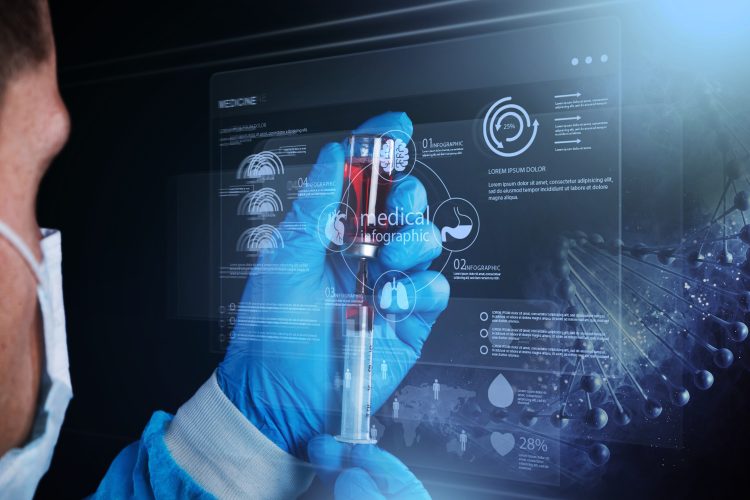Next-generation drug design: how generative AI can tackle undruggable targets
Posted: 3 June 2025 | Murat Tunaboylu (Co-founder of Antiverse) | No comments yet
Generative AI is broadening the boundaries of what is possible in drug discovery. In this article, Murat Tunaboylu, CEO and Co-founder of Antiverse, reveals how the zeitgeist technology is enabling scientists to tackle previously undruggable targets like GPCRs and ion channels to deliver patient impact faster.


By combining advanced machine learning with structural biology, generative AI is facilitating the development of new therapies while compressing drug development timelines, expediting the journey from identification to market which once spanned decades.[1] This marks a fundamental shift with the potential to bring treatments to patients faster and for conditions once considered intractable, complex, or misunderstood.
Among the most challenging of these are G protein-coupled receptors (GPCRs) and ion channels – two pivotal protein families in drug discovery, collectively influencing a variety of physiological processes. These complex proteins play crucial roles in a wide range of disease areas, including metabolic conditions, neurological disorders and cardiovascular disease. Despite their importance, many GPCRs and ion channels have proven among the most elusive targets in drug design, with traditional methods often falling short due to their structural complexity and inaccessible binding sites.
The dilemma of undruggable targets
The statistics surrounding traditional drug discovery make for sobering reading, with approximately 90 percent of drug candidates failing to progress through clinical trials.[2] This represents billions of dollars spent on research and significant delays in bringing vital therapies to patients in need. The cost of a single failed clinical trial is staggering, ranging from $800 million to $1.4 billion, depending on the stage of development and therapeutic area.[3] This high failure rate often means pharmaceutical companies shelve programmes at early clinical stages, creating a bottleneck in the pipeline of potential new treatments. The root causes of these failures often lie in the limitations of preclinical models and ineffective candidate selection processes, highlighting the need for more sophisticated predictive approaches to drug design.
Despite their well-documented roles in disease, 227 GPCRs remain ‘undrugged’.[4] To date, the US Food and Drug Administration (FDA) has approved just three antibody therapies targeting GPCRs, further illustrating how tough they are to crack using conventional approaches.[5]
Part of the reason is that GPCRs pose a unique set of challenges for researchers:
- Complex and dynamic structures. GPCRs have intricate, shape-shifting structures with hard-to-reach binding sites, making it difficult to design drugs that bind specifically to the desired state.
- Membrane-embedded nature. As transmembrane receptors, GPCRs are embedded in the cell membrane; when removed from this membrane environment, they lose their form, making them difficult to study in isolation.
- Conformational flexibility. GPCRs can adopt multiple conformations, each potentially associated with different signalling pathways.
The combination of these factors creates an extremely tough environment to navigate in drug discovery. Traditional trial-and-error methods are inefficient against such complex targets, reinforcing the need for new approaches to drug design that can meet the unmet needs of patients.
How generative AI can overcome GPCRs’ drug design challenges
Generative AI is emerging as a promising solution to these long-standing challenges as it helps identify potential drug candidates and optimise their properties early in the discovery process.
Streamlining drug candidate selection with generative AI
A key advantage over traditional methods is generative AI’s ability to ‘learn’ the rules of molecular interactions by training on large, complex datasets. Through pattern recognition, these models can predict which drug targets are most likely to be effective.
A key advantage over traditional methods is generative AI’s ability to ‘learn’ the rules of molecular interactions by training on large, complex datasets.
This approach streamlines the identification and selection of lead candidates. Advanced algorithms can perform multiparameter clustering to analyse molecular characteristics, such as how selectively a compound binds to a protein target, assessing the candidate’s potential efficacy against the disease in question.
The creation of epitope-specific libraries and precision targeting
Using detailed structural and sequence data, AI can also be used to create antibody libraries – collections of diverse antibody sequences designed to target specific parts of a protein. These libraries can be tuned with high confidence against precise target regions called epitopes, which may only be a few amino acids wide. Compared to traditional drug discovery campaigns, this method has a higher predictive accuracy and thus an improved likelihood of discovering functional binders.
In contrast, screening antibodies using a random sampling method has significant drawbacks. With a typically low chance of finding binding targets, this approach doesn’t account for the intricate complex structure of certain targets. For notoriously hard-to-reach targets like GPCRs and ion channels, where binders are particularly rare, rational drug design can potentially help generate new therapeutic options. This precision targeting with epitope-specific libraries not only offers the tantalising prospect of finding new ways to tackle undruggable targets, but it also paves the way for accelerating the entire drug discovery process.
Accelerating drug design with generative AI
The capabilities of generative AI translate directly into a dramatic acceleration of the drug discovery timeline, which can be condensed from years to just six months, all while enhancing the precision, accuracy and reliability of the process.
This application of generative AI allows researchers to:
- Rapidly screen vast compound libraries by analysing billions of molecules efficiently, thus narrowing the pool of candidates for further analysis.
- Predict binding affinity and specificity with high accuracy. AI models can be used to predict how molecules will interact with target proteins, improving the likelihood of identifying viable drug candidates earlier.
- Optimise antibody properties for improved efficacy and reduced side effects. AI techniques like deep mutational scanning and tools that can rapidly improve and augment antibody characteristics enhance therapeutic effectiveness while minimising potential adverse side effects.
- Identify novel binding sites that may have been overlooked by traditional methods. Advanced deep learning models can analyse protein structures as 3D images, uncovering hard-to-spot binding sites and expanding the range of potential drug targets.
- Generate de novo drug design. By creating new molecular structures with desired properties, generative AI enables researchers to explore chemical spaces that may not have been previously accessible to human scientists.
This expedited process provides critical hope for patients urgently needing new treatments, making new therapeutic options available for unmet clinical needs.
Conclusion
The use of generative AI isn’t just a new form of technology; it offers something radically different from what has gone before, opening the door to genuinely new and innovative approaches for previously intractable targets in drug discovery. This represents a watershed moment, switching the industry from analogue to digital.
For patients awaiting treatments for diseases with previously undruggable targets, there is the potential to bring novel therapies to market in record time that could transform the landscape of treatment options for a wide range of serious health conditions.
By overcoming challenges such as intricate structures and hard-to-reach binding sites, generative AI enables the development of epitope-specific libraries and precision targeting. This shift moves us closer to a future where ‘undruggable’ diseases become treatable and novel therapies reach patients in record time.
References:
[1] https://themedicinemaker.com/business-regulation/cutting-down-the-decades-in-drug-development
[2]https://www.asbmb.org/asbmb-today/opinions/031222/90-of-drugs-fail-clinical-trials
[4] https://pmc.ncbi.nlm.nih.gov/articles/PMC6882681/
[5] https://www.nature.com/articles/nrd.2018.153


Meet the author
Murat Tunaboylu, Co-founder of Antiverse
Murat is a business leader with over 15 years of experience in software engineering and bioinformatics across multiple automated life science and drug discovery applications. He previously worked at Thermo Fisher, where he automated DNA synthesis workflows, and at Singer Instruments, where he developed cell imaging and lab automation solutions. In 2017, Murat co-founded Antiverse, an AI-driven company specialising in antibody design.
Related topics
Antibodies, Antibody Discovery, Artificial Intelligence, Screening, Targets
Related organisations
Antiverse
Related people
Murat Tunaboylu (Co-founder of Antiverse)








